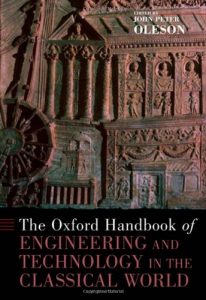
This hasn’t been said to me (yet), but I’ve heard variations on this opinion from panels and in questions at literary festivals and in interviews. It often crops up when someone writing contemporary crime fiction has discussed the undeniable challenges of incorporating accurate forensic science without getting bogged down in pages of technical detail. It’s tempting to think that life would be so much simpler without fingerprints, DNA and the like.
Whose life? The murderer’s maybe, but not the writer’s. Whatever the investigative tools to hand, the same questions must be answered to solve a crime in any period: means, motive and opportunity. How, why and who? There’s a reason the ‘how’ comes first. As Lord Peter Wimsey says in ‘Busman’s Honeymoon’, when you know how, you know who.
Motive matters, of course it does, and we can thank Cicero for coining the phrase “cui bono?” ‒ who benefits? That hasn’t changed since antiquity and our historical detective can make good progress in narrowing the field of suspects by asking intelligent questions, making connections, and finding out who had good reason to want the victim dead.
The next step is checking for opportunity, by ruling potential killers in or out, by checking who’s got an alibi – more Latin! Though that has its challenges in days of whatever yore, without today’s CCTV and mobile phones, without Golden Age crime fiction’s useful train tickets and telegrams, and everything else in between. There are only so many convenient beggars or passers-by that a history mystery writer can expect to get away with as witnesses, whether they’re proving where the killer was, or if some hapless suspect needs to prove that’s where they weren’t. That’s before we get on to the problems of exactly when the killer or innocent suspect was seen. Sundials may be ancient technology which still works today, but they’re not exactly precise.
But unless a mystery novel’s protagonist can demonstrate how a murder was committed, and that the prime suspect must be the one who did it, all they have got is suspicion. Without fingerprints, who can tell who was the last to hold a knife or a sword? Without modern medicine, who’s to say whether someone died of appendicitis or poison? With no lab to offer chemical analysis of those peculiar smears on the corpse’s clothes, how to locate a crucial crime scene? What’s the history mystery writer to do?
The answer’s the same as it is for the contemporary crime writer. Research. We need to remember that pre-modern doesn’t mean the same as primitive. Start researching ancient medicine, arts, crafts, weapons and transport, and you soon learn that experts in their field had a detailed and sophisticated understanding of a whole lot of things. Things that can be used to pinpoint whodunnit, because the killer needed to know something specific to do whatever it was. Some crucial art or craft may lead to a physical characteristic or occupational injury of the sort we rarely see today, that condemns the guilty man – or woman. The more reading you do, the more possible plots and twists and turns appear.
At this point, the history mystery author faces the same challenge as the diligent contemporary crime writer. How not to bore your readers rigid with all the fascinating stuff you’ve just discovered. The temptation is the same, whether it’s the intricacies of modern mass spectrometry, or the multiple processes involved in tanning animal hides in a pre-industrial world.
Well, I can assure you that, while Philocles’ family business is indeed leather working, the amount of detail about that has been pared down in each successive draft of Shadows of Athens. As for anything else – no spoilers!
